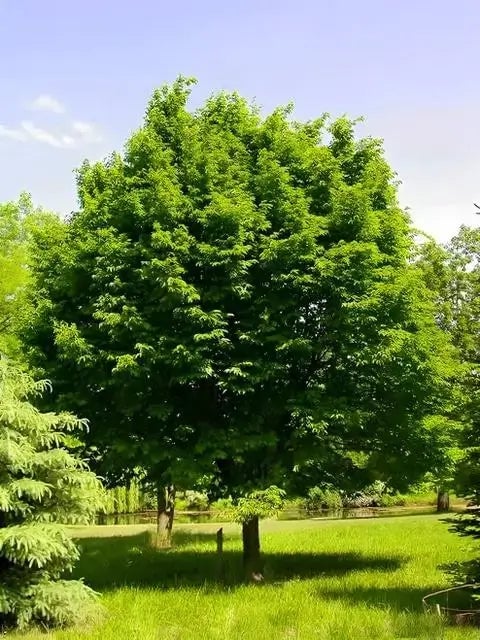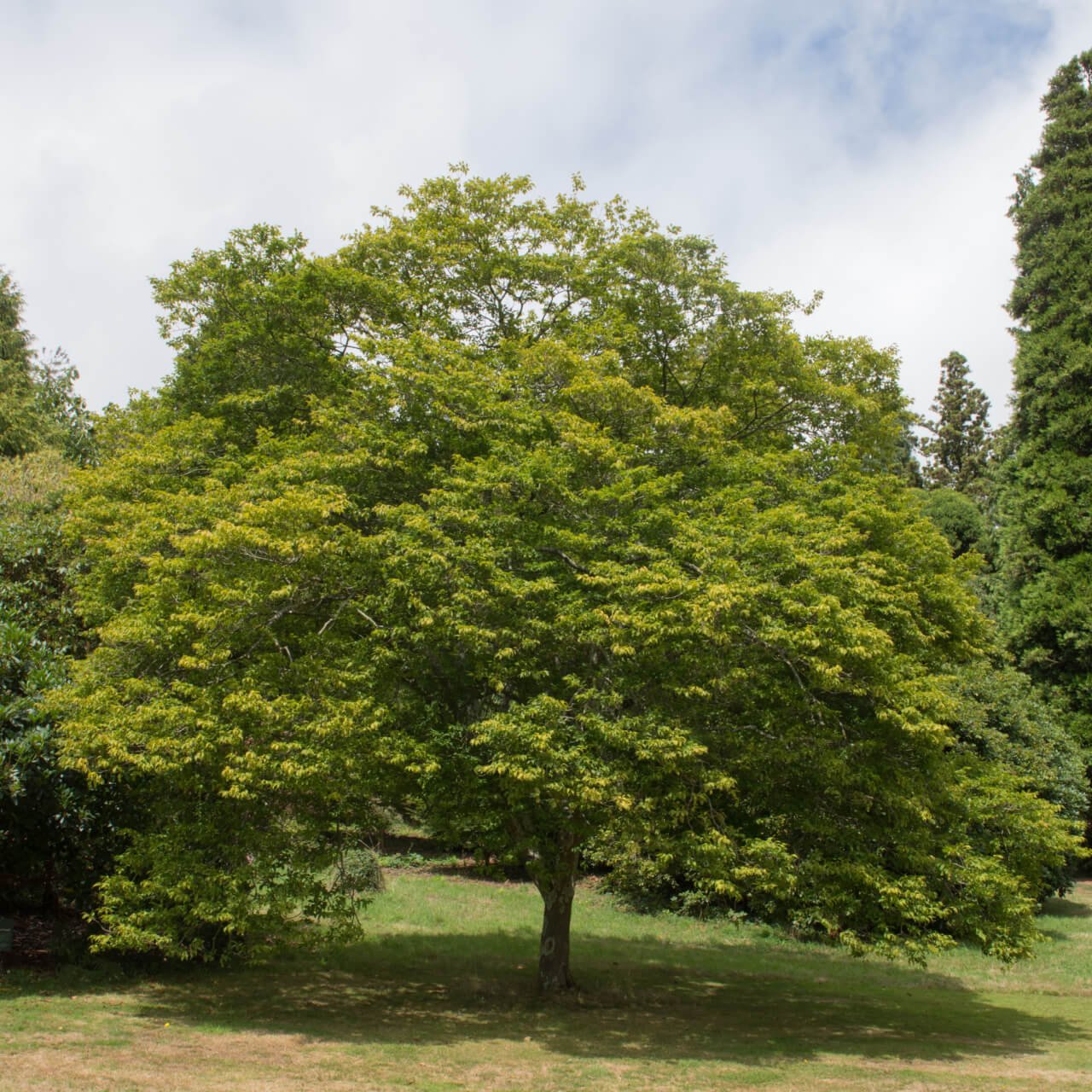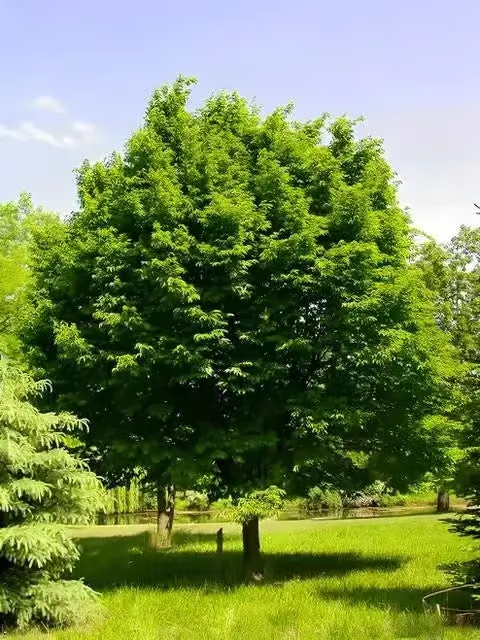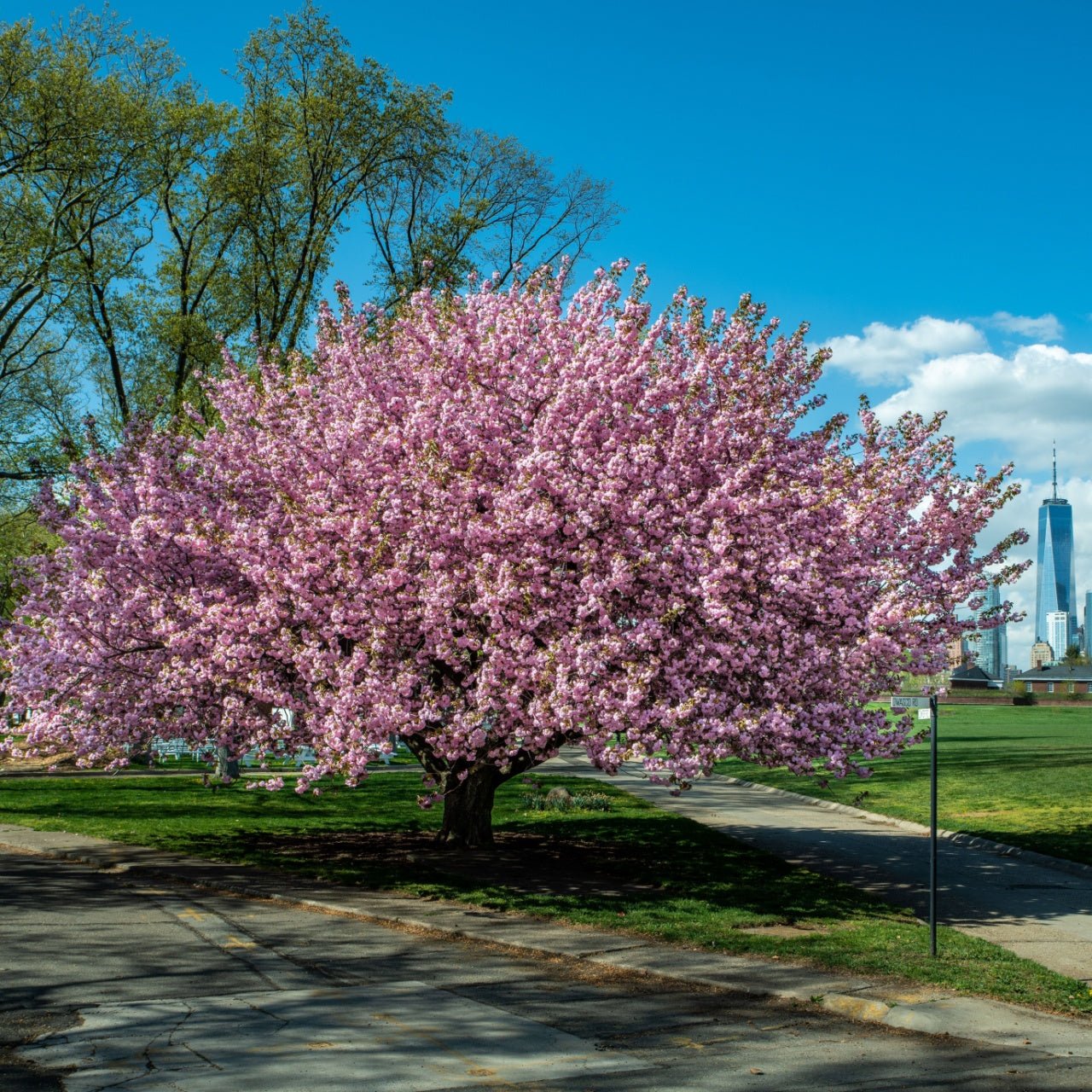



Hornbeam Tree
Excellent natural privacy screen
Provides stunning fall color
Tolerates urban pollution well
Thrives in
ZONE 3ZONE 4ZONE 5ZONE 6ZONE 7ZONE 8ZONE 9This plant ships:
November 20251 Year Guarantee on all plants
Hornbeam Tree - Carpinus betulus
The Hornbeam Tree (Carpinus betulus) is a hardy and deciduous tree native to Europe. It is a beloved tree with distinctive, gray bark that is lightly ridged and smooth.
Plant Details - Hornbeam Tree
Family: Betulaceae
Light Requirement: Full Sun
Water Needs: Moist
Height: 40 – 60 ft.
Spread: 40 – 60 ft.
Growth Rate: Slow
Bloom Time: Spring
Flower Color: Yellow
Wildlife Value: Attracts butterflies
Landscape Uses and Maintenance - Hornbeam Tree
The Hornbeam Tree is a hardy and beautiful deciduous oval shaped tree that will make a great visual impact in your yard or landscape.
This tree can be planted in an area with full sun or partial shade. This is an excellent option for planting as an ornamental accent or focal point. Create a windbreak or living privacy hedge with this tree.
Plant this tree in moist and well draining soil. It can handle different soil conditions, including loamy or sandy soils. It will tolerate alkaline or dry soils.
Water this tree regularly until it is well established. You should water this tree during the heat of summer when drought occurs.
Its dark green, deeply veined, and doubly serrated leaves will turn a beautiful shade of yellow in the fall. This tree will create plenty of shade as it grows that is suitable for growing a shade garden underneath.
This tree produces two kinds of catkins that will emerge in early spring. Male catkins are yellow. Female catkins are green and turn into papery samaras. This tree produces small brown nuts that birds and small mammals will enjoy eating.
This tree does not have any major disease problems.
You can add mulch or compost around the base of the tree, but be sure to give plenty of space to keep the trunk dry.
Watch this tree for signs of stress and cut off any damaged or diseased branches.
Deer resistant. Protect it while it is young and vulnerable to browsing damage.
Noteworthy Characteristics
Hornbeam Tree will attract lots of wildlife to your yard or landscape. Birds will use its branches to make their nests.
This Is How Your Plants Will Look upon Delivery

Height at Maturity
Over 25 Feet
Care
Hornbeam trees thrive in well-drained soil and benefit from regular watering, especially during dry periods. They should be pruned in late winter to preserve form and release dead or diseased branches. It is recommended that they be fertilized annually in early spring to encourage healthy growth.
Plant Reproduction
Hornbeam tree spreads via seeds and suckers, forming dense clusters
Plant bare root trees during the dormant season in early spring or late fall (November through April). Dig the hole twice as wide as the roots so the soil is well-drained. Position the tree so the root flare is at or just above ground level. Fill the hole back with the soil you dug from and water. Maintain soil moisture, especially in the tree's early years, by providing deep, regular watering. Apply a 2-4 inch mulch away from the trunk at the base to retain moisture and suppress weeds. Prune trees during the first few seasons to establish strength and resilience, remove damaged branches, and continue maintenance pruning as the tree matures. Regularly inspect for pests and diseases and apply integrated pest management practices. Protect young trees from mechanical damage and extreme temperatures with tree guards, and stake them if necessary for support, removing the stakes after one or two years.
Shipping date depends on the date displayed and chosen when you order from the product's page.
We only accept returns on plants verified dead. If you think your plants have died, we offer a 1 year warranty, please use this File a Claim Link to verify dead plants and start with return warranty process.






Adaptable Growth:
This tree thrives in a variety of soil types and conditions, making it a versatile choice for different garden settings.
Low Maintenance:
Hornbeam trees are relatively easy to care for and require minimal pruning, making them ideal for busy gardeners.
Dense Foliage:
Hornbeam trees feature a thick canopy that provides excellent privacy and shade throughout the year.
Elegant Shape:
With its distinctive, upright form and symmetrical branches, the Hornbeam adds a formal and refined touch to any landscape.
Caring Tips
How do I care for my Hornbeam Tree?
Each box contains detailed care instructions and information about your product. But here's the basics.
Care Tips
Hornbeam trees thrive in well-drained soil and benefit from regular watering, especially during dry periods. They should be pruned in late winter to preserve form and release dead or diseased branches. It is recommended that they be fertilized annually in early spring to encourage healthy growth.
Light Requirements
The Hornbeam tree grows best in full sun to partial shade. It can tolerate various light conditions but grows most vigorously and maintains its best form in complete sun, obtaining at least six hours of direct sunlight daily.
Hardy Planting Zones
3 • 4 • 5 • 6 • 7 • 8 • 9
Header
Use this content to share information about your store and products.
Frequently Asked Questions
How often should I water my plants?
How do I know if my plant is getting too much or too little sunlight?
What should I do to prepare my plants for winter?
What are the signs that my plant needs fertilizing?
How can I prevent pests from damaging my plants?
How do I choose the right plant for my climate zone?






